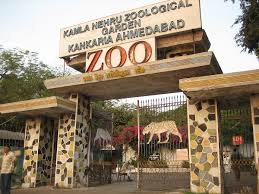Ahmedabad: A City of Heritage and Modernity

Introduction
Ahmedabad, the largest city in the Indian state of Gujarat, is renowned for its rich heritage, bustling economy, and cultural diversities. Recently designated as a UNESCO World Heritage City in 2017, Ahmedabad holds significant historical and modern importance, which continues to draw attention from global tourists and business investors alike. This article delves into the various facets of this vibrant city, highlighting its historical landmarks, economic developments, and the ongoing efforts to preserve its cultural identity.
Historical Significance
Founded in the 15th century by Sultan Ahmed Shah, Ahmedabad boasts an array of architectural wonders, including the iconic Sabarmati Ashram, where Mahatma Gandhi lived and led India’s struggle for independence. The city is also home to the remarkable Stepwell of Adalaj and the Sidi Saiyyed Mosque which features the exquisite ‘Tree of Life’ lattice work. Each of these sites narrates the rich historical tapestry of the city and reflects the amalgamation of different cultures and religions over centuries.
Economic Growth
In recent years, Ahmedabad has emerged as a major economic hub in western India. It has seen significant growth in sectors like textiles, information technology, and pharmaceuticals. The government’s initiative to transform the city into a smart city has fostered investments in infrastructure, education, and health services. The upcoming GIFT City (Gujarat International Finance Tec-City), which aims to cater to the financial services sector, is expected to further boost economic prospects. Moreover, the Vibrant Gujarat Global Summit, initiated in 2003, continues to attract international players and ignite entrepreneurial spirit.
Cultural Landscape
A city that thrives on diversity, Ahmedabad’s cultural landscape is vibrant and eclectic. Festivals like Navratri and Uttarayan (kite festival) see massive participation, showcasing the city’s joyful spirit. Moreover, the rich culinary heritage epitomizes the blend of flavors from various communities, reflected in local favorites like Dhokla, Khandvi, and the famous Ahmedabad street food. Cultural institutions like the National Institute of Design (NID) and the Gujarat Vidyapeeth contribute significantly to the creative fraternity.
Conclusion
Ahmedabad stands at the crossroads of tradition and innovation, making it a vital player in India’s growth narrative. As the city gears up for modernization while preserving its cultural essence, it is poised to become a beacon of opportunity for both residents and visitors. The upcoming projects and initiatives underline Ahmedabad’s commitment to developing as an inclusive smart city while staying rooted in its rich heritage, making it a perfect place for those who treasure tradition alongside progress.









